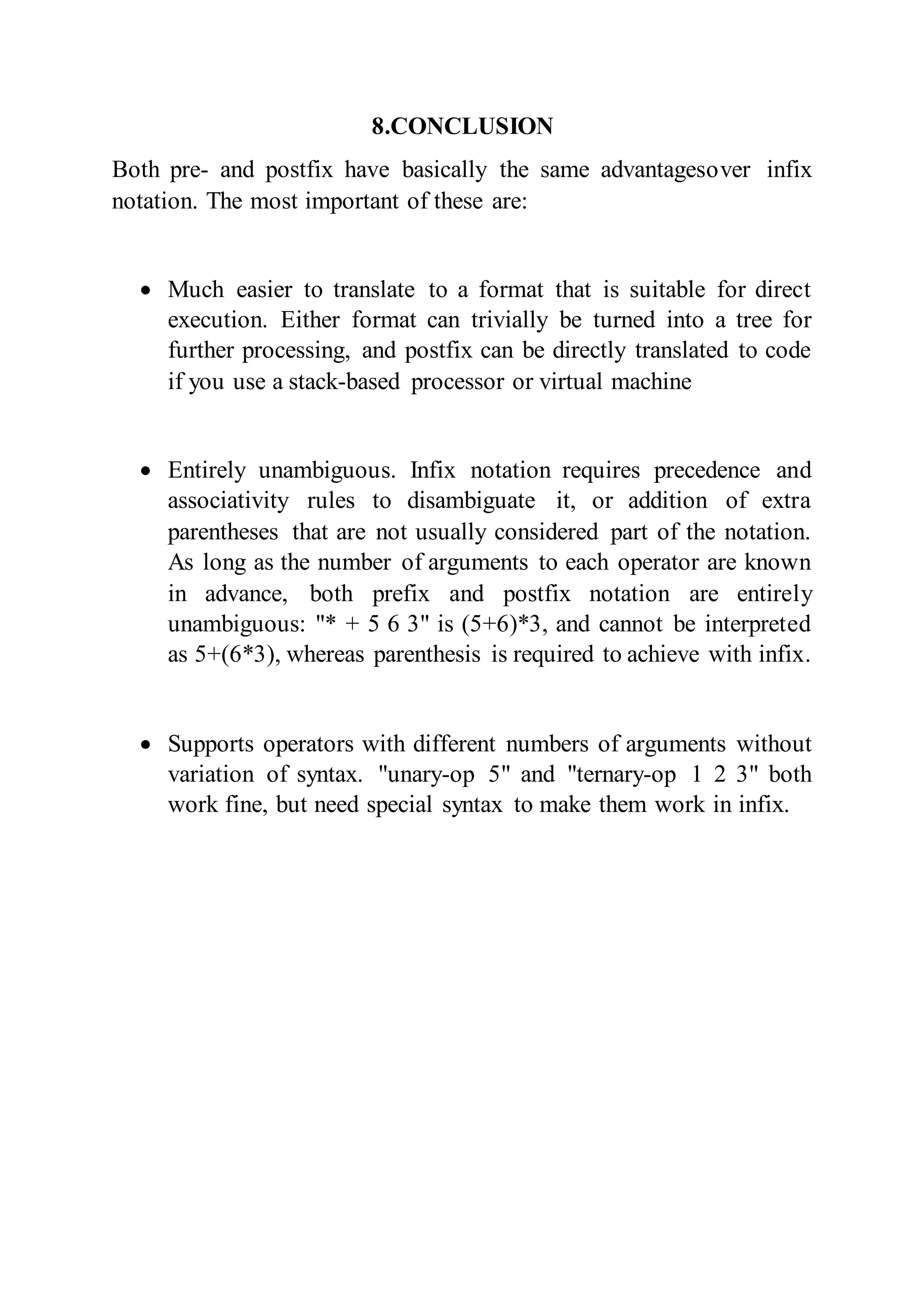The document discusses infix, postfix, and prefix notations for mathematical expressions. It provides examples to illustrate the differences between the notations. The key points are:
- Infix notation writes operators between operands, like "X + Y". Postfix writes operators after operands, like "XY+". Prefix writes operators before operands, like "+ XY".
- Expressions can be converted between the notations algorithmically by fully parenthesizing the expression and moving operators to the position of matching parentheses.
- Converting an expression to postfix moves operators to the position of the right parenthesis, while prefix moves operators to the left parenthesis position.

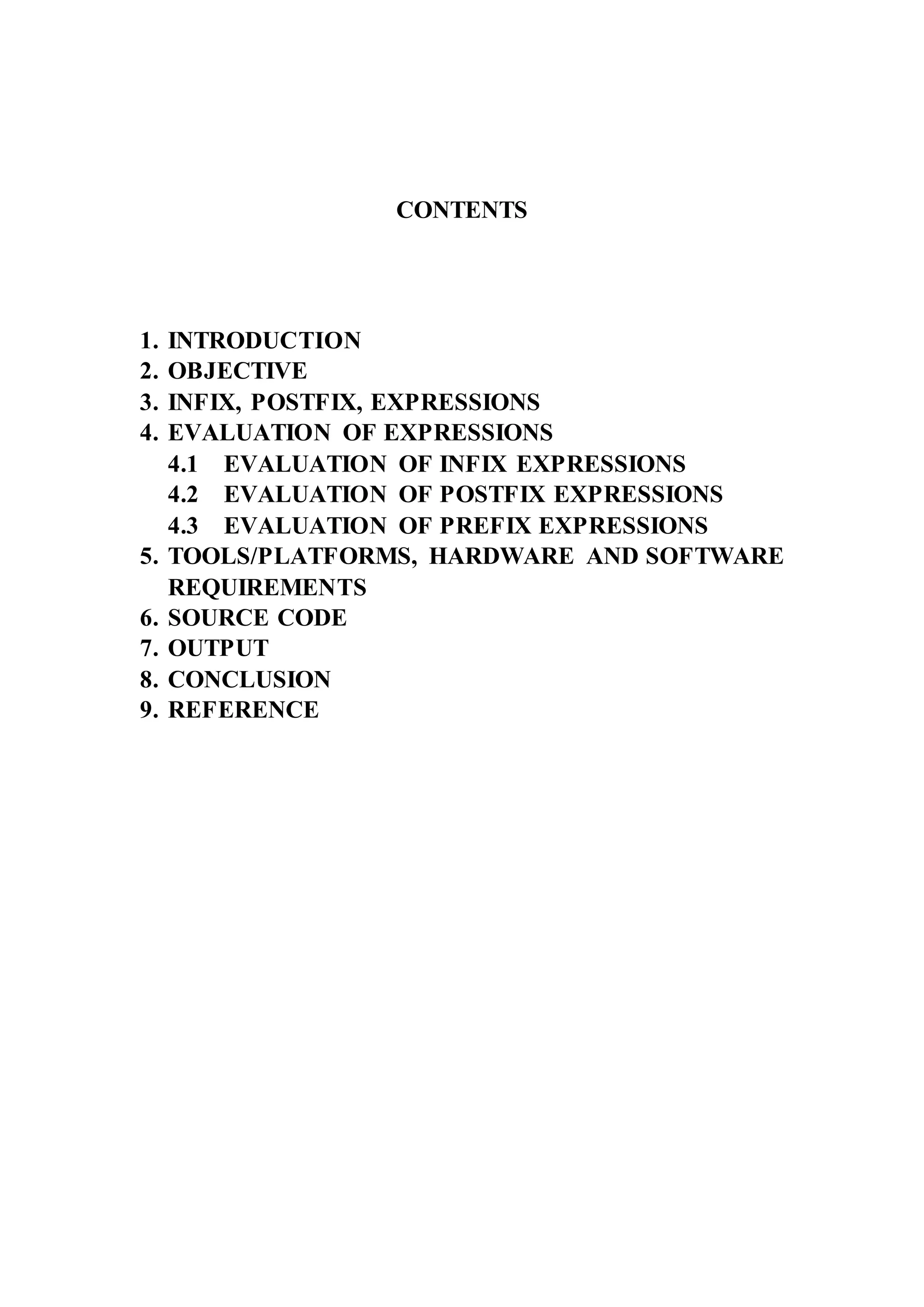

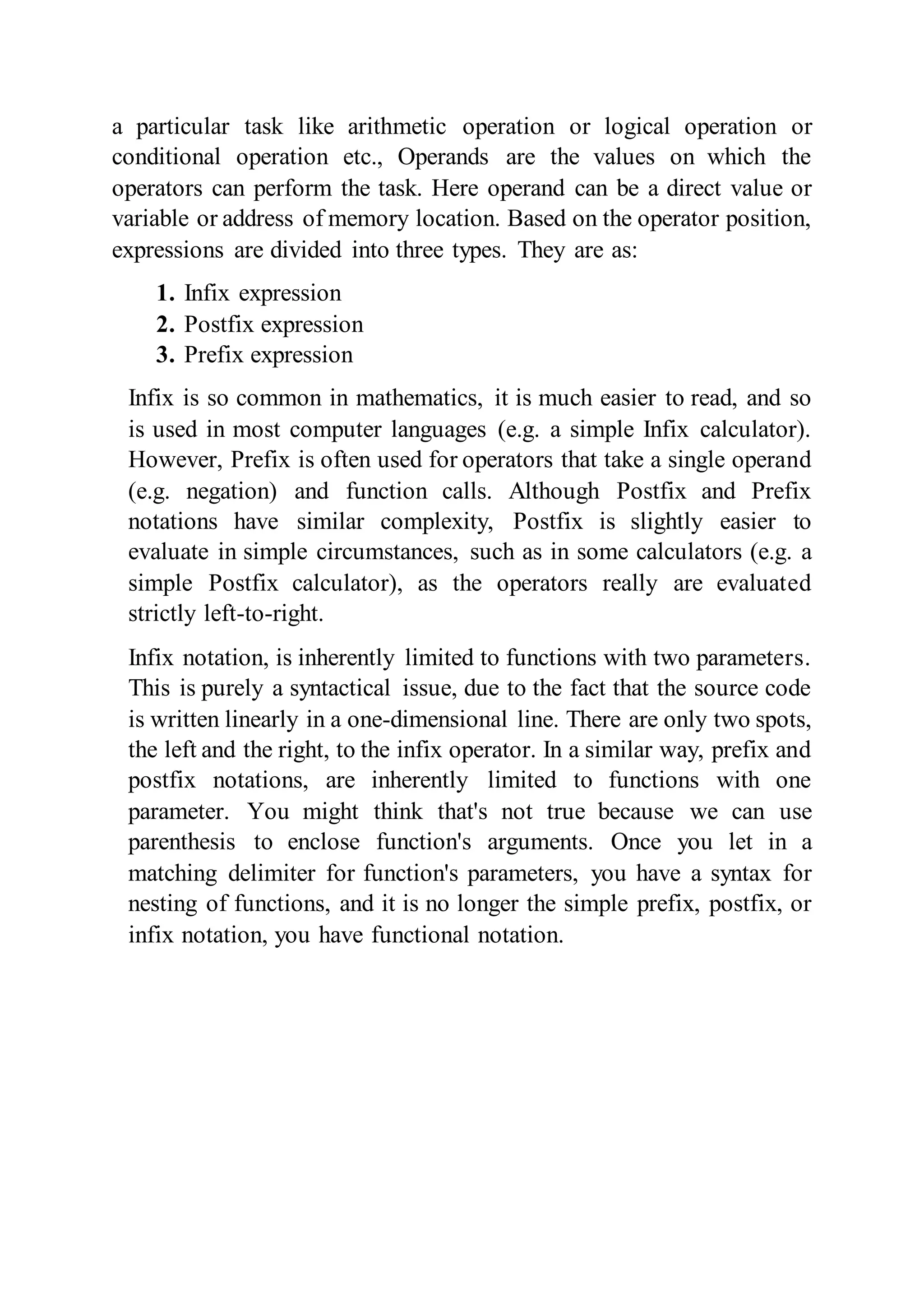



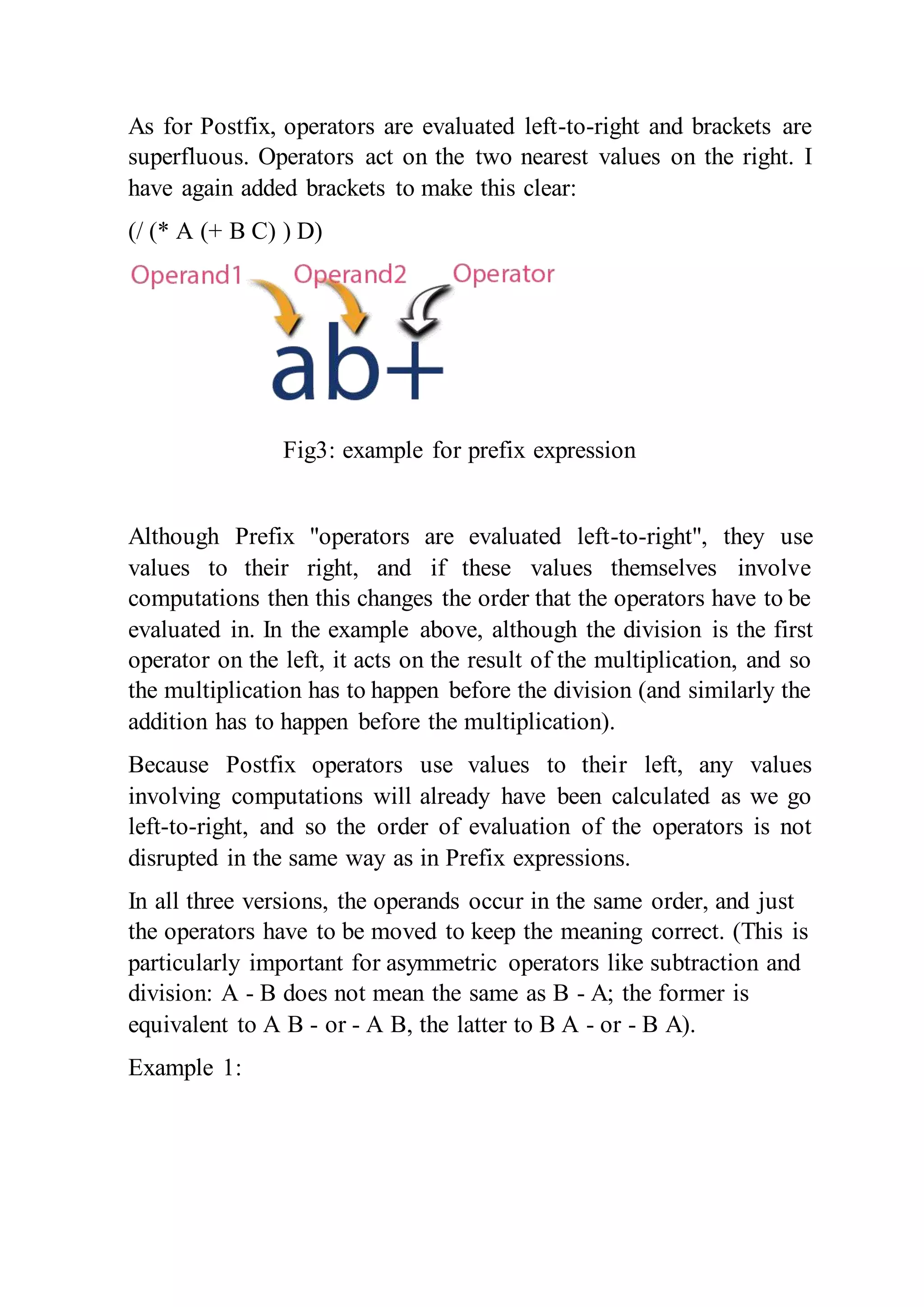

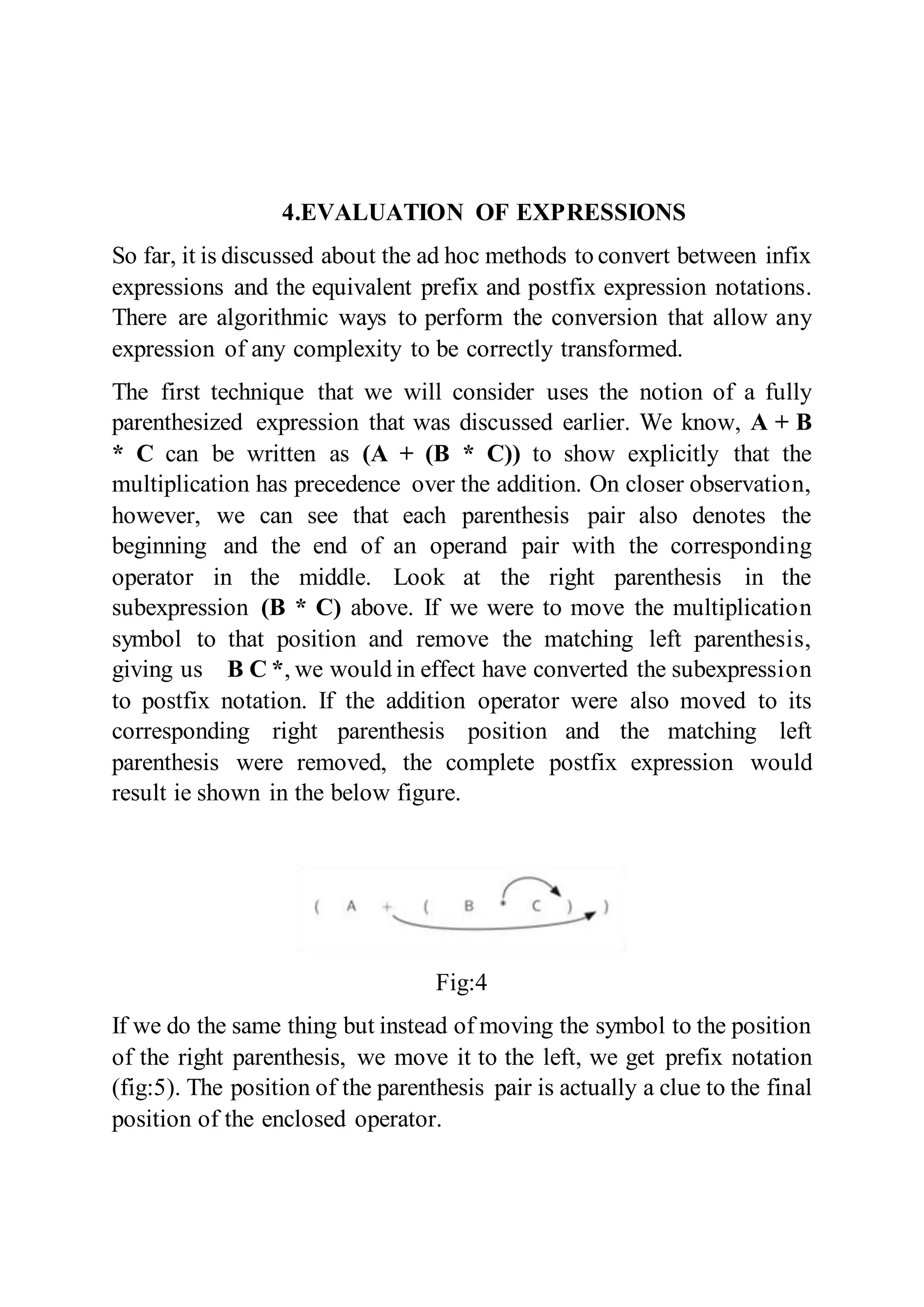
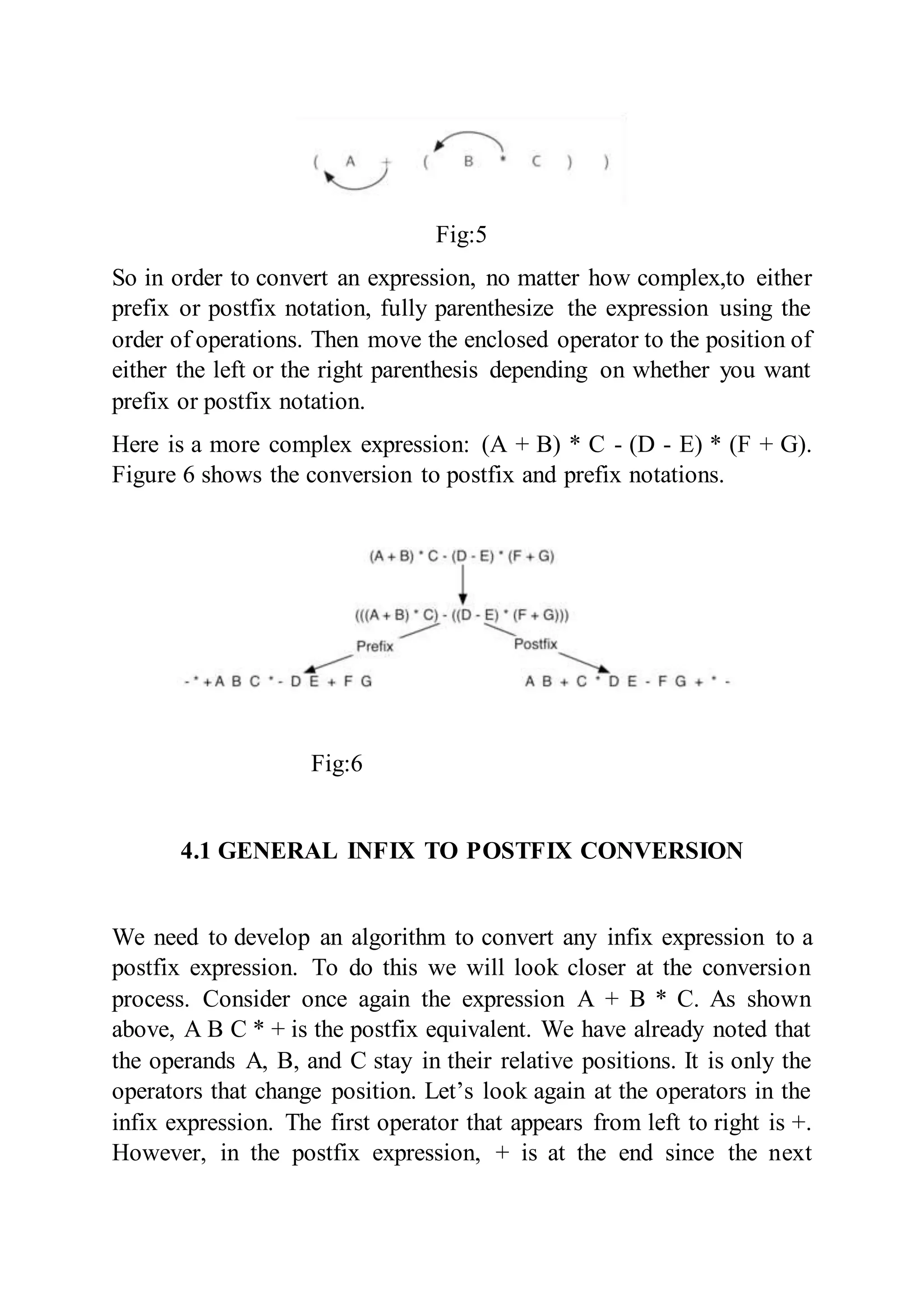

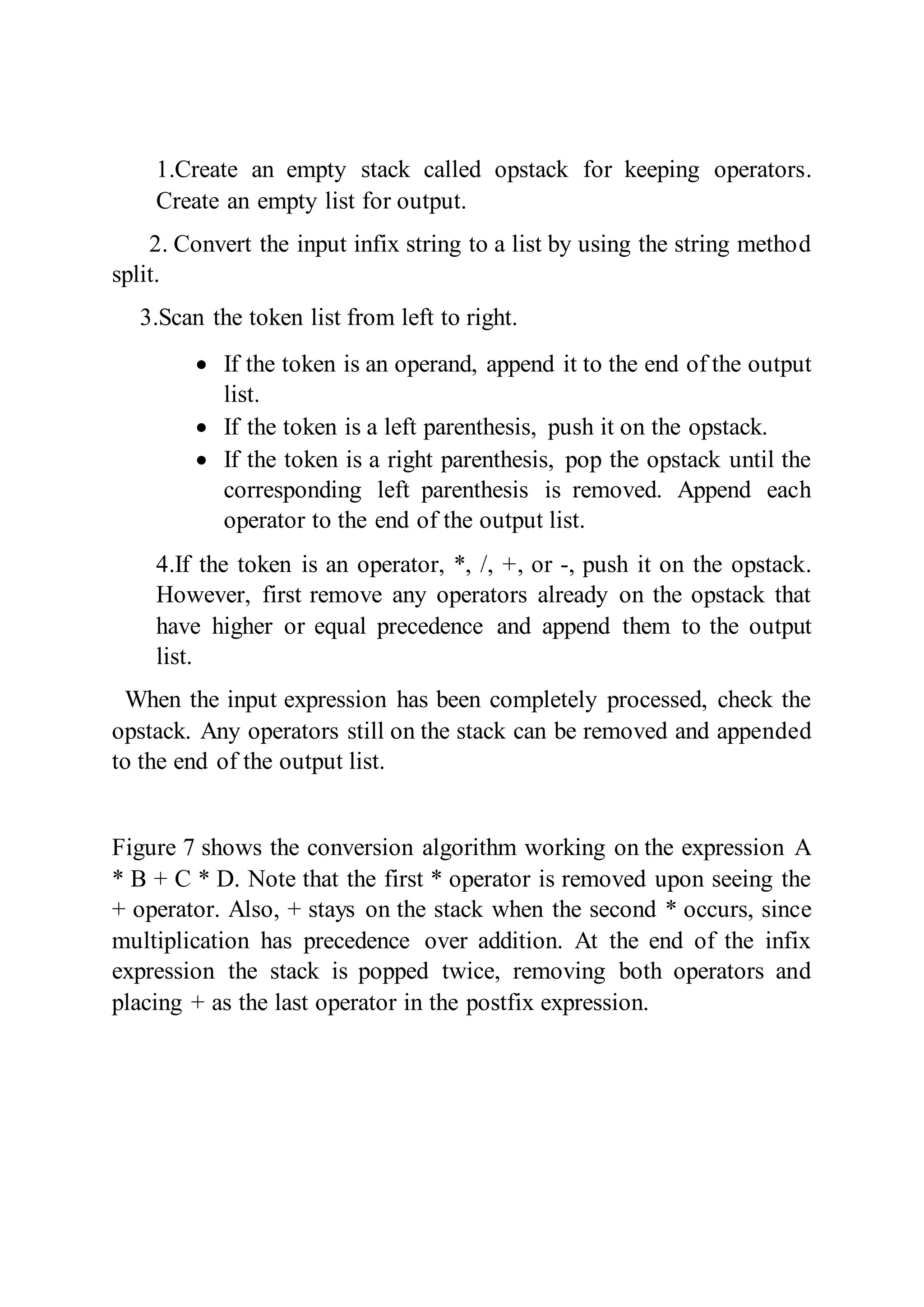



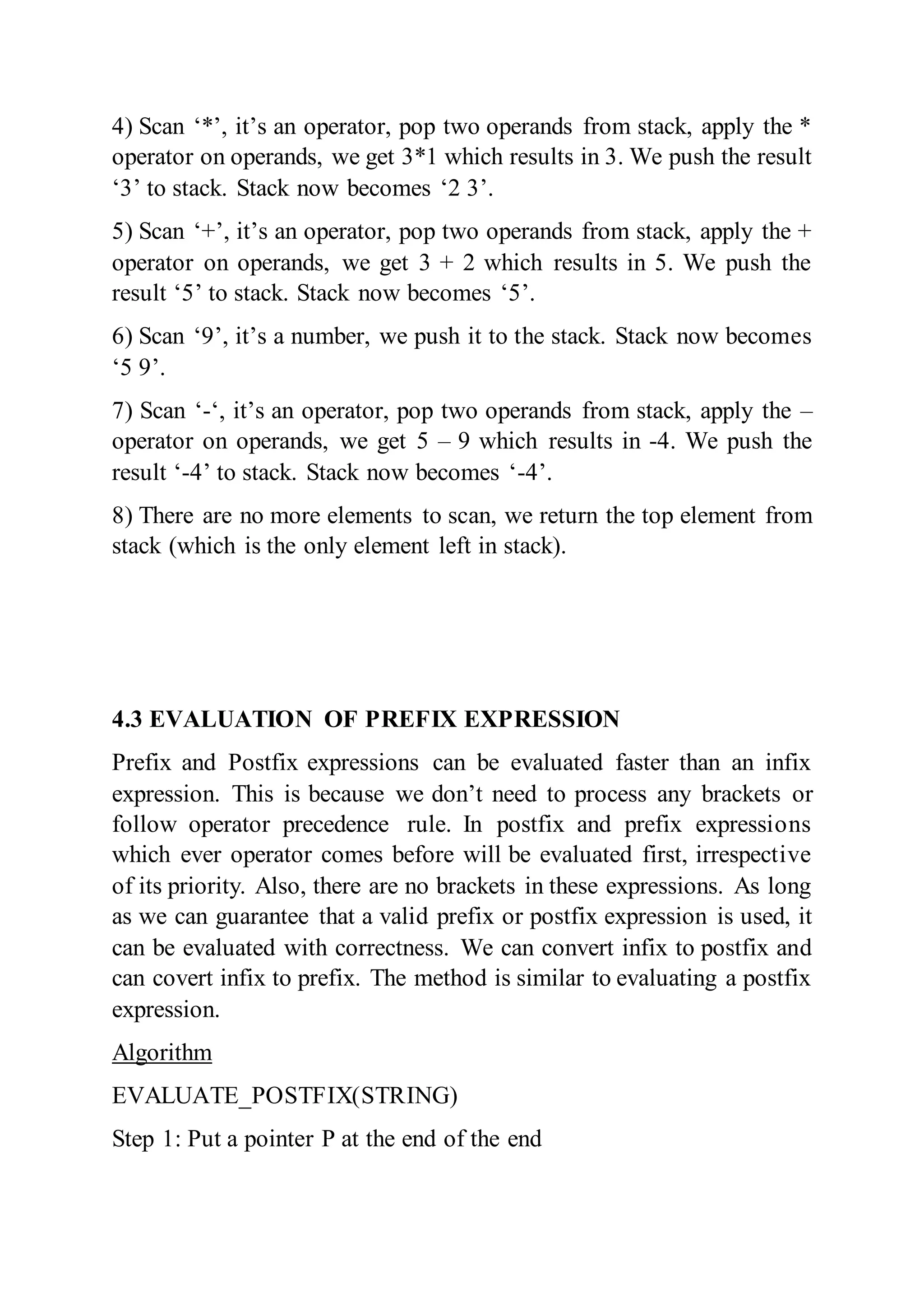


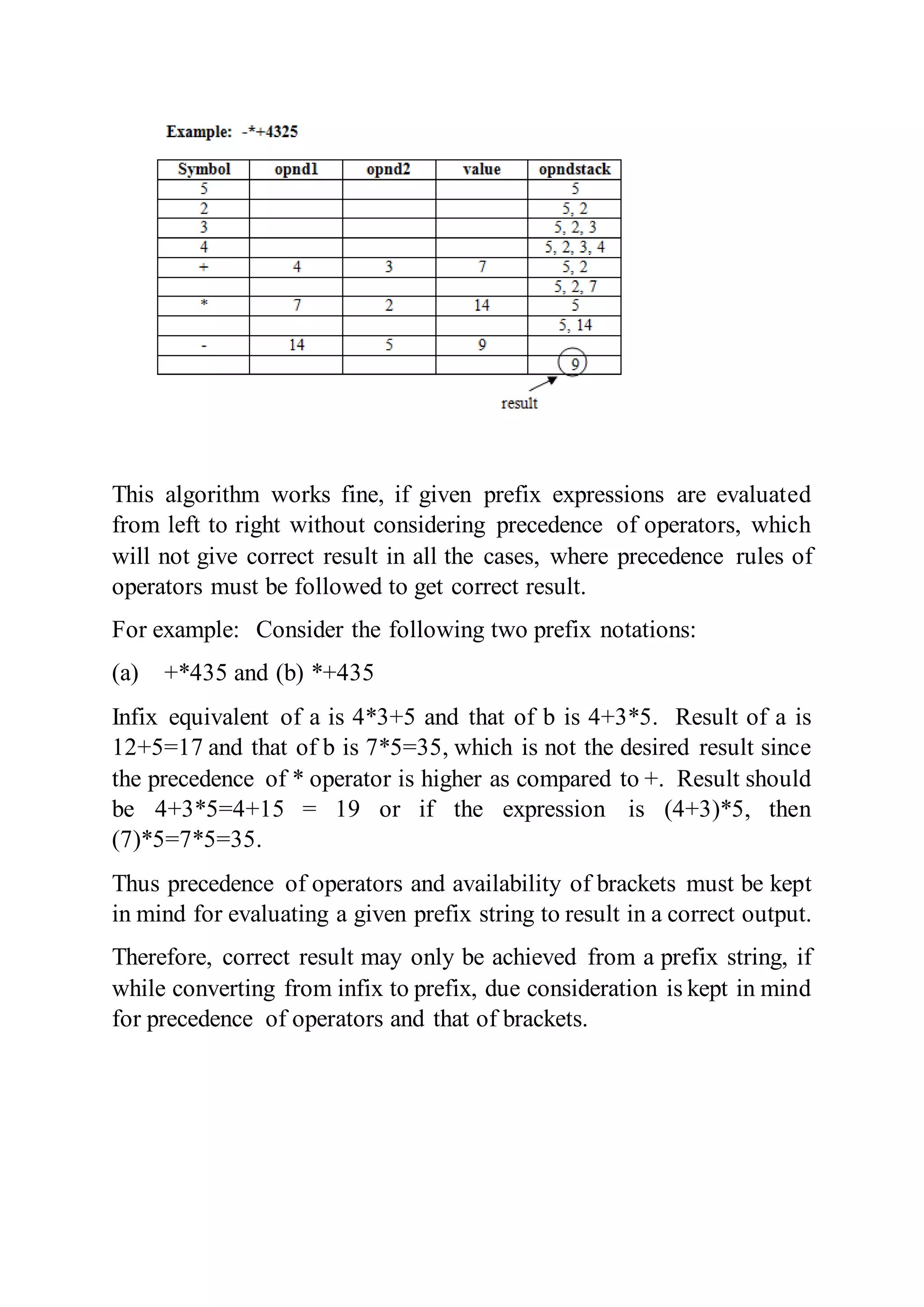







![char exp[1000];
// Stack type
struct Stack
{
int top;
unsigned capacity;
int *array;
};
// Stack Operations
struct Stack *
createStack (unsigned capacity)
{
struct Stack *stack = (struct Stack *) malloc (sizeof (struct Stack));
if (!stack)
return NULL;
stack->top = -1;
stack->capacity = capacity;
stack->array = (int *) malloc (stack->capacity * sizeof (int));
if (!stack->array)
return NULL;
return stack;
}](https://image.slidesharecdn.com/mycasestudy-181103132538/75/Mycasestudy-28-2048.jpg)
![int isEmpty (struct Stack *stack)
{
return stack->top == -1;
}
char peek (struct Stack *stack)
{
return stack->array[stack->top];
}
char pop (struct Stack *stack)
{
if (!isEmpty (stack))
return stack->array[stack->top--];
return '$';
}
void push (struct Stack *stack, char op)
{
stack->array[++stack->top] = op;
}
// The main function that returns value of a given postfix expression
int evaluatePostfix (char *exp)
{
// Create a stack of capacity equal to expression size
struct Stack *stack = createStack (strlen (exp));](https://image.slidesharecdn.com/mycasestudy-181103132538/75/Mycasestudy-29-2048.jpg)
![int i;
// See if stack was created successfully
if (!stack)
return -1;
// Scan all characters one by one
for (i = 0; exp[i]; ++i)
{
// If the scanned character is an operand (number here),
// push it to the stack.
if (isdigit (exp[i]))
push (stack, exp[i] - '0');
// If the scanned character is an operator, pop two
// elements from stack apply the operator
else
{
int val1 = pop (stack);
int val2 = pop (stack);
switch (exp[i])
{
case '+':push (stack, val2 + val1);
break;
case '-':push (stack, val2 - val1);
break;
case '*':push (stack, val2 * val1);
break;](https://image.slidesharecdn.com/mycasestudy-181103132538/75/Mycasestudy-30-2048.jpg)
![case '/':push (stack, val2 / val1);
break;
}
}
}
return pop (stack);
}
bool isOperand (char c)
{
// If the character is a digit then it must
// be an operand
return isdigit (c);
}
double evaluatePrefix (string exprsn)
{
stack<double> Stack;
for (int j = exprsn.size() - 1; j >= 0; j--) {
// Push operand to Stack
// To convert exprsn[j] to digit subtract](https://image.slidesharecdn.com/mycasestudy-181103132538/75/Mycasestudy-31-2048.jpg)
![// '0' from exprsn[j].
if (isOperand(exprsn[j]))
Stack.push(exprsn[j] - '0');
else {
// Operator encountered
// Pop two elements from Stack
double o1 = Stack.top();
Stack.pop();
double o2 = Stack.top();
Stack.pop();
// Use switch case to operate on o1
// and o2 and perform o1 O o2.
switch (exprsn[j]) {
case '+':
Stack.push(o1 + o2);
break;
case '-':
Stack.push(o1 - o2);
break;
case '*':
Stack.push(o1 * o2);
break;](https://image.slidesharecdn.com/mycasestudy-181103132538/75/Mycasestudy-32-2048.jpg)






